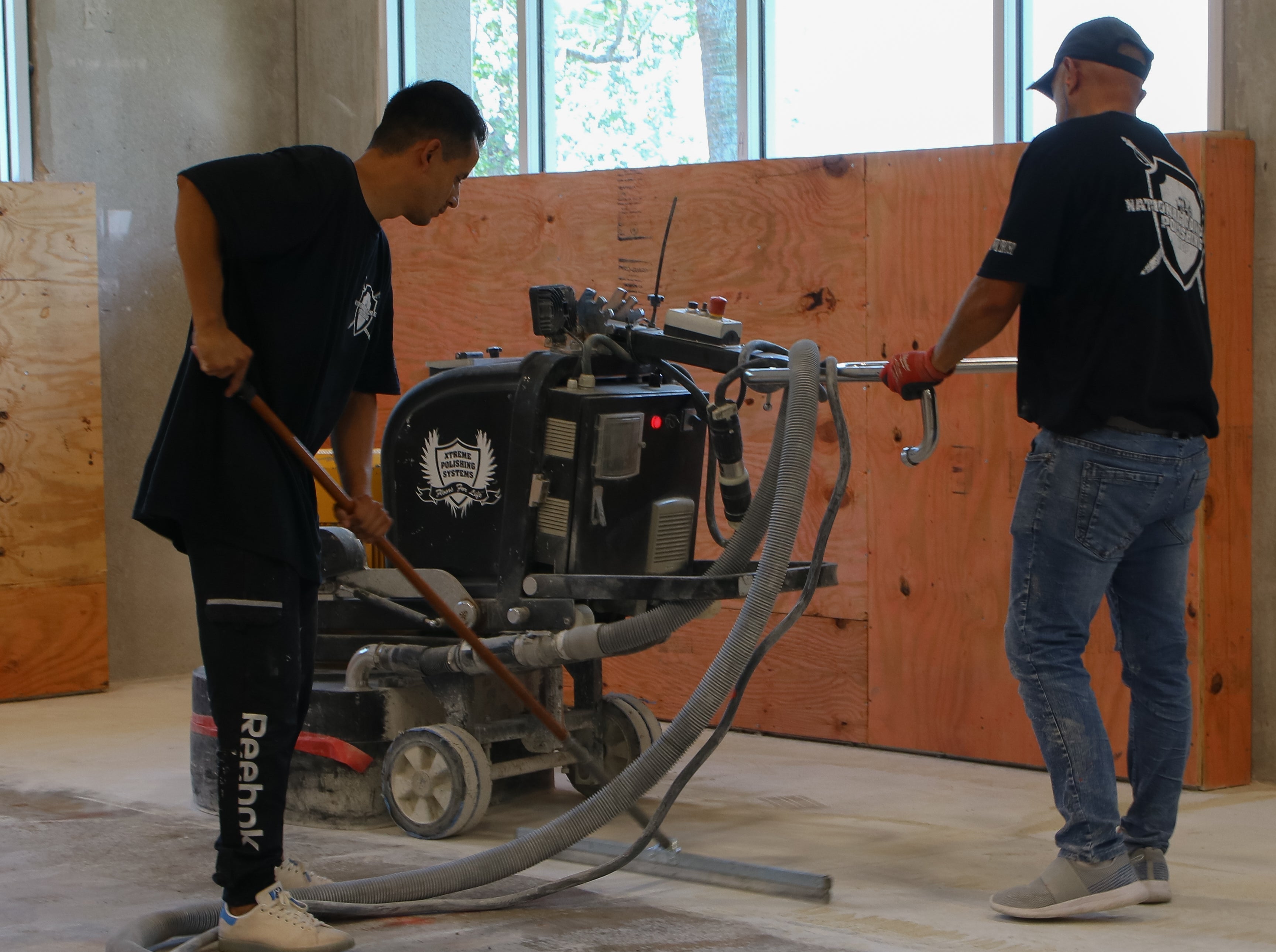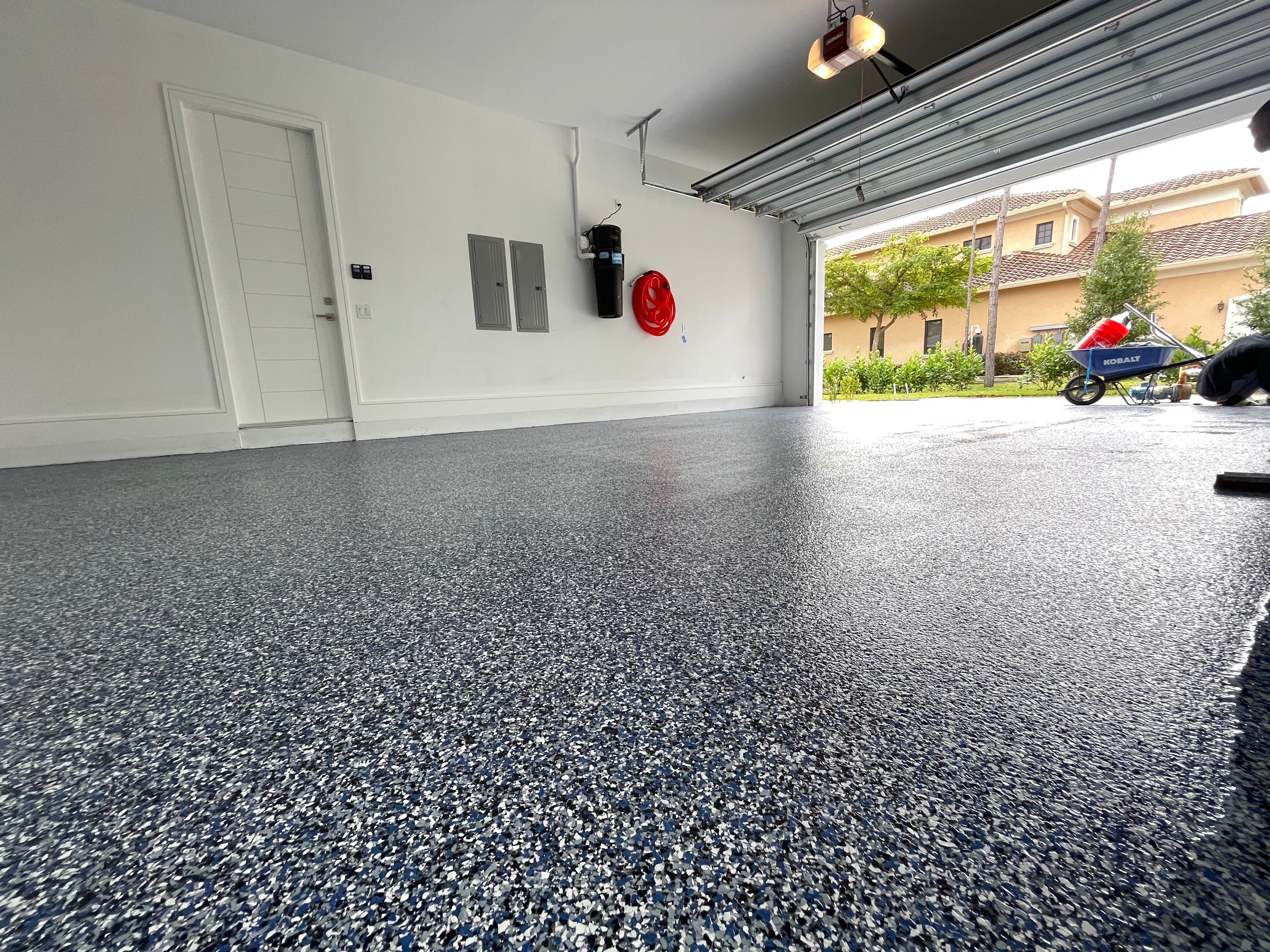
What's the Difference Between Epoxy & Polyaspartic Resins?
Find the right resin for the job.
Contractors, and anyone renovating their floors, have a big decision to make: do you use polyaspartic resin, or epoxy resin? It's important to be informed before committing to any big decision that could affect the installation process. The differences between polyaspartic can make a big difference in how your project will turn out, both during installation and for years to come. This article will help you get informed on what you need to know about your choice of resin!
You should also know that it's not only possible, but very common, to use both resins during a project! Depending on the needs of the project, it may make sense to use one resin for one layer, and another resin for a different layer. Using this combination of resin layers can help you protect against each resin's weaknesses!
Polyaspartic Resin
Polyaspartic resin was developed in the early 1990s, several decades after epoxy had already been developed, and is a polyurea-modified ester. It was made as an alternative to epoxy that's meant to be fast-curing, and high-performance.
Although polyaspartic resin was designed for industrial floors, it's a great solution for smaller projects too. You can use polyaspartic for garages and driveways, and commercial office spaces, and more!
Polyaspartic Resin Pros:
- Rapid Curing: Polyaspartic's main advantage over epoxy is how quickly it cures, taking only 2-3 hours. It's what makes it a great choice for any industrial and commercial projects that need to be back in use as quickly as possible.
- Great Strength & Resistance: For any floor space that needs to withstand heavier traffic, or chemical exposure, polyaspartic can handle the job.
- UV Stable: Polyaspartic resin is capable of withstanding long term UV exposure without yellowing much more than traditional epoxy resin.
- Better Air Quality: Epoxy will often leave a heavy odor and decrease air quality during installation, but polyaspartic is cleaner, with a lower VOC content.
Polyaspartic Resin Cons:
- Less Cost Efficient: Because of its strong properties and manufacturing process, polyaspartic resin is generally more expensive than traditional epoxy resin.
- Less Installation Leeway: Due to its rapid drying and curing time, your installers must be prepared to work quickly within that 2-3 hour curing period.

Epoxy Resin
Epoxy resin consists of an epoxide and polyamine combination resulting in a polymeric solution. It was developed in the 1930s, and has been growing in popularity every year. And it's easy to see why! Epoxy is a great solution for any flooring project, from residential garages to industrial warehouses.
Epoxy Resin Pros:
- Simple Installation: Epoxy is perfect for DIY projects, for anyone new to the industry, and for longtime experts.
- Excellent Traction & Abrasion Resistance: Despite its perfectly sleek surface, epoxy resin offers great traction, especially when combined with a few additives. It's also incredibly durable to shock and other wear.
- Reasonably Priced: Especially for those buying in bulk, epoxy is distributed at incredibly reasonable rates for how much solution you need to finish a floor compared to other flooring alternatives.
Epoxy Resin Cons:
- Slow to Cure & Dry: Epoxy takes 24-48 hours to cure, making it a less ideal choice for floors that need to be back in service quickly.
- Temperature & Climate Sensitive: Epoxy can begin to lose its strength at higher temperatures. Its sensitivity also means that there should be special care and attention to inspecting the climate of where you're installing the epoxy, as it can affect the installation itself.
- Unstable in UV Exposure: Epoxy exposed to UV over a long period of time will begin to yellow. This is especially obvious in clear coat epoxy floors.
Learn to Install Different Resins With Professionals!

Epoxy and polyaspartic resins require slightly different installation techniques, but those slight differences can make or break a project. Get prepared for any resin flooring installation by getting crucial hands-on experience with professionals! Our 5-day Epoxy Classes program will help you get just that. With that experience, you can boost your business to success. During the program, we'll teach you:
- How to properly mix, and install, different kinds of resins
- Essential marketing and business management skills for your flooring company
- How to use all the machinery involved in floor installations
Join our team today and help yourself find success!
Conclusion
So how do you know which resin you need for your project? While there are other resins available on the market, you'll likely be choosing between polyaspartic and a traditional epoxy resin. Or you could even use both in the same project! Use this article, along with your own knowledge of what you want to achieve, and make the most informed decision you can. Between polyaspartic's fast-curing properties, or the cost-efficient strength of epoxy resin, there are no bad decisions.
Are you a flooring contractor, or hoping to become one? Our specialists will help you every step of the way with any concern, so call our team at (954) 287-3797 today! For any refilling of resources, or other flooring material needs, our EpoxyETC online store will sell it at competitive prices.




